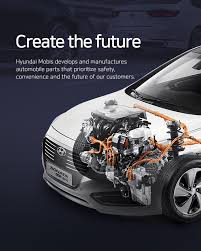
Hyundai Mobis (KRX:012330), will unveil the latest life-saving DDREM (Departed Driver Rescue & Exit Maneuver) technology at CES in January 2018. DDREM uses three checkpoints to determine if a driver begins to depart from the driving role, and requires assistance. If departure is detected, DDREM technology takes over driving controls, scans the environment and guides the vehicle to a safe stopping point away from traffic.
The AAA Foundation for Traffic Safety estimates for the U.S., over 20% of traffic fatalities per year – approximately 7,000 deaths – are due to drowsy driving. Mobis DDREM technology is being developed to save the majority of these lives. “By narrowing our focus to the safety aspects of autonomy, we can bring lifesaving level 4 autonomous technology into passenger cars quickly,” said David Agnew, director of autonomous vehicle development, Hyundai Mobis North America. “Our research approach has been clinical; we are essentially working on a ‘cure’ for drowsy driving injuries and fatalities. Through this approach, we are building a technology that will save many lives and offer immense peace of mind to drivers and passengers.”
DDREM uses three identifiers to determine if a driver is at risk and compares driver actions to a database of drowsy driving incidents. Checkpoints include:
* An infrared camera scans driver facial and eye movements to determine if the driver keeps eyes forward, changes blinking patterns or exhibits other signs of drowsiness. The camera used by Mobis has been tested and can “see” through glasses with ease;
* The technology looks for key identifiers used in advanced driver assistance systems (ADAS) – if the driver is moving in and out of a lane, crossing lanes, zigzagging or making erratic movements consistent with drowsy driving accidents; and
* If DDREM determines that the driver has fallen asleep, it transitions vehicle control to level 4 autonomous driving mode. The software uses vehicle hardware already found on most new cars – including electronic brakes, electric power steering, radars, and camera systems – as well as basic mapping and GPS to identify a safe place for the vehicle to pull over and stop. In most “rescue” cases, DDREM will only need to function in full autonomy mode for less than a mile, minimizing the exposure and complexity of the self-driving system.
As OEMs, suppliers and technology companies race to bring level four and five autonomy to market, the conversation is centered around the complexity, infrastructure and governance required for full autonomy. Because DDREM is solely focused on using autonomous driving to save lives – rather than as convenience technology – the solution could be introduced in new vehicles across OEMs much more quickly and cost effectively.
The current DDREM development has a limited role detecting and rescuing in response to drowsy driving, but the company plans to research and evolve the concept to operate in other critical situations, including medical incidents such as seizures, fainting, and cardiac arrest. As autonomous technology advances, DDREM capabilities could include guiding the vehicle directly to a nearby hospital in the case of a medical emergency.
In addition to DDREM, Hyundai Mobis will showcase new technology in autonomous driving, green technology and infotainment at CES, including e-corner module, pop-up steering wheel and hologram virtual secretary. Visitors will be able to experience these technologies in interesting and unique methods, including video, demonstration vehicle and AR.
About Hyundai Mobis
Hyundai Mobis is a global tier-1 automotive supplier. It was established in 1977, and is headquartered in Seoul, Korea. The corporate philosophy is to become a lifetime partner with technologies for automobiles and people.
Hyundai Mobis currently employs over 30,000 people. Manufacturing operations are in over 30 locations in 10 countries, including Korea, China, and the U.S. Products include automotive modules (chassis, cockpit and front-end), brakes, suspensions, airbags, lamps, and automotive electronics. R&D headquarters are in Korea with 4 technical centers worldwide, Germany, China, India, and the U.S.
Hyundai Mobis has mass-produced a great number of ADAS technologies and green car components. For more information, please visit the website at http://en.mobis.co.kr/











More Stories
Is Your 70 Series Land Cruiser Underperforming? Here’s How to Unleash Its True Potential
What to Do After a Motorcycle Accident to Protect Yourself
Injured in a Motorcycle Crash? Talk to an Attorney Now